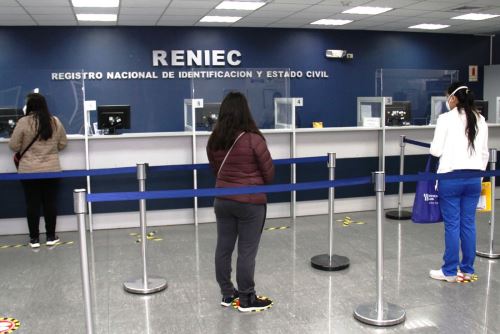The electoral campaign ahead of the 2026 general elections will begin in the coming months, and the population will start to get informed through various channels, among them social media. What impact will it have? Find out in the following report.
A sector of the population will get informed almost exclusively through the latter: Generation Z or centennials, born between the late 1990s and the first decade of the 2000s.
In addition, nearly 2.5 million young people will vote for the first time in these elections.

Currently, digital platforms are increasingly present in the lives of Peruvians in general and in the way they make relevant decisions, such as which parties or candidates they will vote for in the electoral processes.
In this regard, Digital Law specialist Erick Iriarte indicated that statistical data reveal that today more than 80% of the Peruvian population has internet access. However, he argues that it should be taken into account that a "follower" is not a voter, nor is a "like" a vote.
"Social media is a complement to political campaigns, which must be conducted through the various means available, but it would be a mistake for someone to believe that social media is the only fundamental element of the electoral process," he stated.
In that sense, the lawyer stated that "no one can win an election solely with social media," but, at the same time, no one who wins an election can do so without having these digital platforms.
Preferential vote
In turn, the lawyer specialized in electoral matters, Jose Naupari, said that social media is not enough to win an election, but, in the case of a congressional race, it could make a difference.
The expert stated that, in the case of these elections, even 10 votes can make the difference between someone who gets a seat and someone who is left out, due to the factor of preferential voting.
He noted that political groups face a challenge in relation to digital platforms and the positioning factor, since there are currently 42 political parties registered.
"The old, so-called traditional parties have an advantage in that sense, because their symbol is already (positioned)," Naupari stated, although he mentioned that these same groups also face the challenge of reaching the youngest voters, aged 18 to 20.
"In congressional elections, it's not the candidate's face that appears, but the (party) symbol. That's where I think (social media) can help," he said.
Voting from age 17
Regarding youth voting, bills have been introduced to allow them to vote starting at 17 and even from age 16.
The first proposal was issued by Congressman Jorge Flores Ancachi, who proposes modifying article 30 of the Constitution, to state that "Peruvians over 17 years of age are citizens."
Likewise, Congressman Waldemar Cerron introduced a legislative initiative in this regard, but he proposes lowering the age to 16 to be considered a citizen and, therefore, exercise the right to vote from that age, as happens in other countries.
In statements to Andina News Agency,
Reniec Chief Carmen Velarde leaned in favor of allowing young people from the age of 17 to cast their vote optionally, as a form of "pre-citizenship practice," taking into account that several at that age are already attending university.
"That could be a way forward for them; they would begin to experience what citizenship means," Velarde expressed.

Social networks
Lawyer Erick Iriarte explained that social networks primarily serve three very specific communities.
In the case of platforms like X (formerly Twitter), he indicated that they serve for politicians to communicate mainly to the press, so the media can then amplify the information.
"A second use is in platforms like Instagram or TikTok, which are aimed at young voters, for a different approach to the ways they can interact politically," the Digital Law expert added.
Lastly, he stated, there are communication platforms such as WhatsApp or similar ones, through which parties or candidates can inform about their political proposals.
Editor's note: English version by Jhaen Miranda.
(END) DOP/MCA/JMP/MVB
Published: 6/18/2025